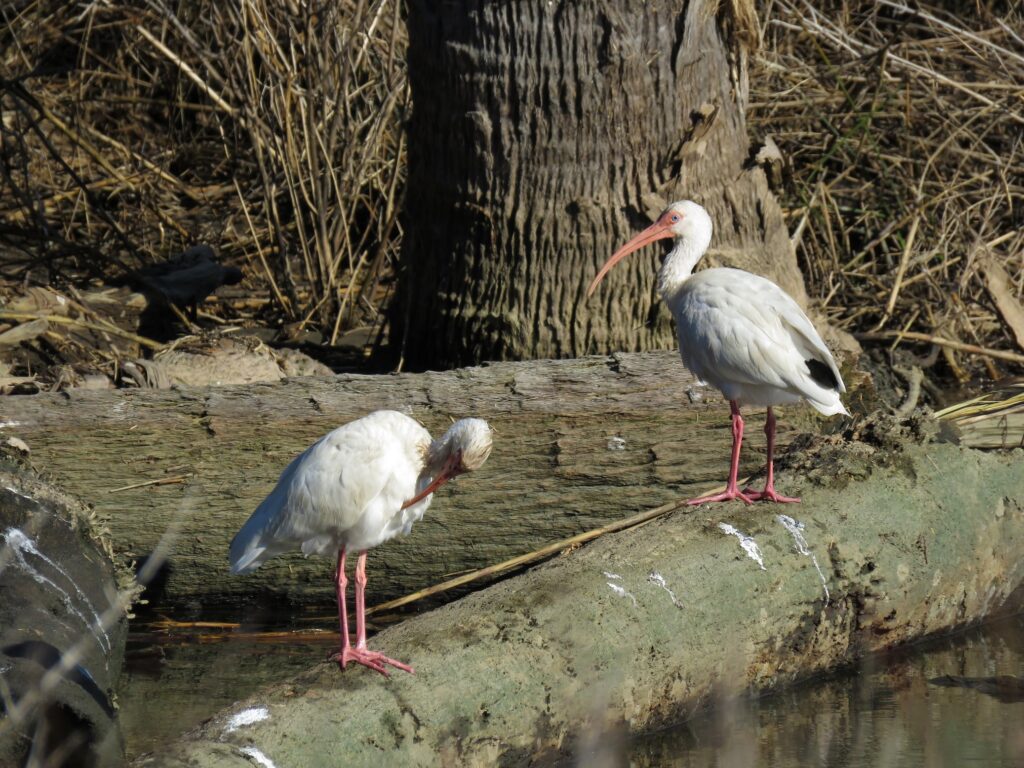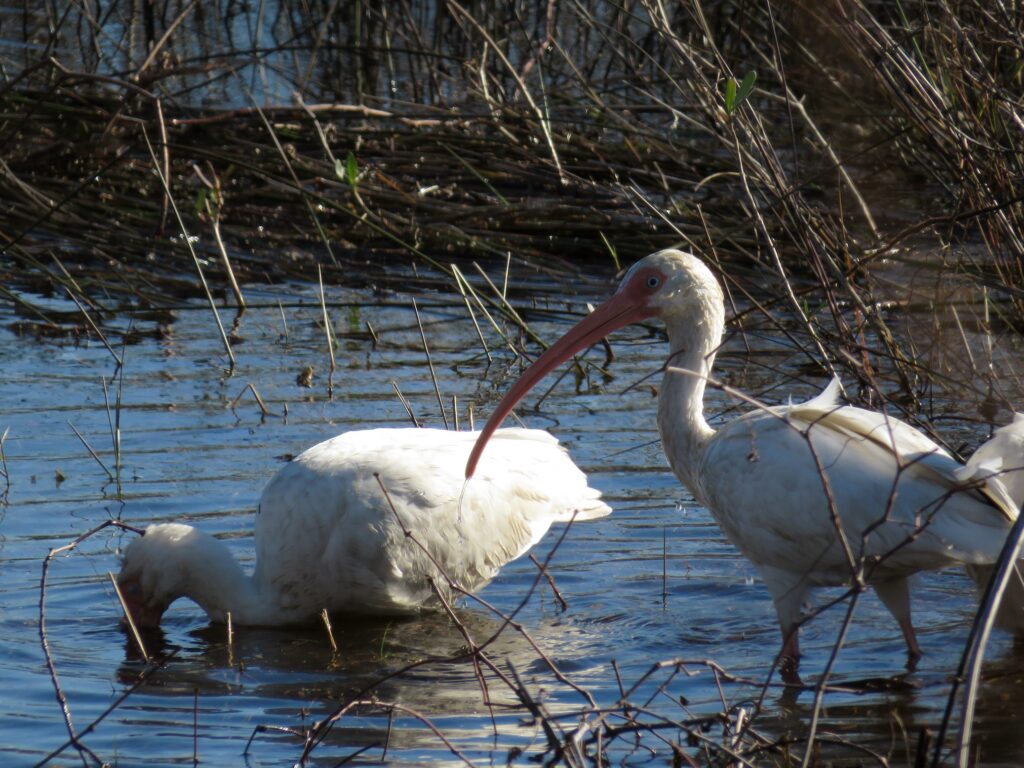



This week for Flora and Fauna Friday it’s a snowy crook-billed critter who’s not afraid to get its feet wet: the White Ibis (Eudocimus albus).
Breeding birds are an icy-white with a rosy-red face and strong bubblegum-pink legs. In flight their wings show tips of contrasting black. Immature birds are a patchwork of warm mocha-brown, cold snow-white, and soft gray. Their body has a streamlined profile and their neck is long and sinuous. Their eyes are a clear sky-blue and their long, drooping bill is dripping with that same bubblegum hue. Ibis are both compact and lean which gives off an athletic vibe. We have a second species of Ibis regularly seen on Edisto Island, but never commonly, called the Glossy Ibis (Plegadis falcinellus). A gorgeous bird of oily-black draining away from a cinnamon neck with dark beady eyes bordered by shining Xenon lines. Ibis are most closely related to our Roseate Spoonbills, outside of other Ibis.
The White Ibis is a common wading bird throughout the coastal plain of the Southeastern United States and Central America. They’re here year-round but their numbers ebb and flow as birds cycle between seasonally preferred habitats. In winter our populations peak as the birds chase warmer weather and better forage. White Ibis love wetlands. Stagger stepping while stabbing through stagnant stands of sedge or sod they forage and feed their way over the shallow waters of our state. They’re ever present every winter in our ephemerally flooded forests and fields as they descent in flocks upon the soggy soil. They’re partial to marsh lands as well and regularly plop down beside our Egrets along the pluffy tidal creeks. White Ibis are rarely seen alone, usually being accompanied by at least two if not two dozen compatriots. Occasionally, mass flocks of hundreds of birds will appear on farm fields following seasonal flooding. I’ve seen them in waves of thousands on the fields surrounding Russell Creek!